İsmail Güvenç
Digital Twins for Supporting AI Research with Autonomous Vehicle Networks
Apr 01, 2024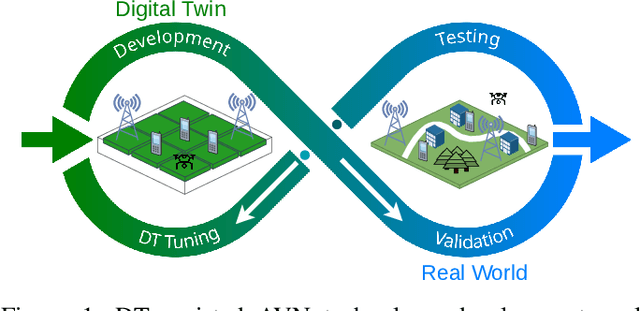
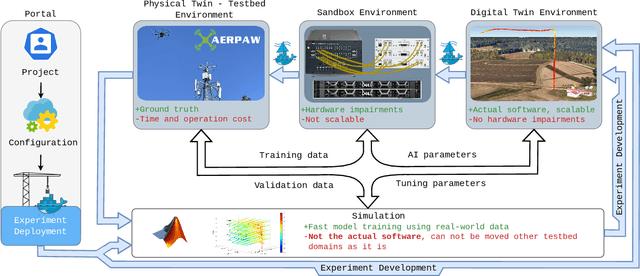
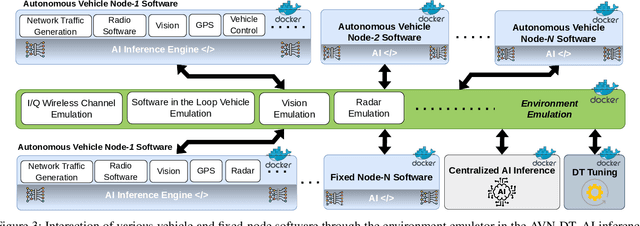
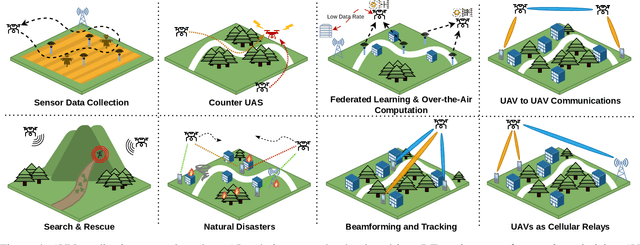
Abstract:Digital twins (DTs), which are virtual environments that simulate, predict, and optimize the performance of their physical counterparts, are envisioned to be essential technologies for advancing next-generation wireless networks. While DTs have been studied extensively for wireless networks, their use in conjunction with autonomous vehicles with programmable mobility remains relatively under-explored. In this paper, we study DTs used as a development environment to design, deploy, and test artificial intelligence (AI) techniques that use real-time observations, e.g. radio key performance indicators, for vehicle trajectory and network optimization decisions in an autonomous vehicle networks (AVN). We first compare and contrast the use of simulation, digital twin (software in the loop (SITL)), sandbox (hardware-in-the-loop (HITL)), and physical testbed environments for their suitability in developing and testing AI algorithms for AVNs. We then review various representative use cases of DTs for AVN scenarios. Finally, we provide an example from the NSF AERPAW platform where a DT is used to develop and test AI-aided solutions for autonomous unmanned aerial vehicles for localizing a signal source based solely on link quality measurements. Our results in the physical testbed show that SITL DTs, when supplemented with data from real-world (RW) measurements and simulations, can serve as an ideal environment for developing and testing innovative AI solutions for AVNs.
UAV Corridor Coverage Analysis with Base Station Antenna Uptilt and Strongest Signal Association
Mar 27, 2024Abstract:Unmanned aerial vehicle (UAV) corridors are sky lanes where UAVs fly through safely between their origin and destination. To ensure the successful operation of UAV corridors, beyond visual line of sight (BVLOS) wireless connectivity within the corridor is crucial. One promising solution to support this is the use of cellular-connected UAV (C-UAV) networks, which offer long-range and seamless wireless coverage. However, conventional terrestrial base stations (BSs) that typically employ down-tilted sector antennas to serve ground users are not ideally suited to serve the aerial vehicles positioned above the BSs. In our previous work, we focused on studying the optimal uptilt angle of BS antennas to maximize the wireless coverage probability in UAV corridors. However, the association of BSs with UAVs was restricted to the nearest BS association, which limits the potential coverage benefits. In this paper, we address this limitation by considering the strongest BS signal association in UAV corridors, which enables enhanced coverage within the corridor compared to the nearest BS association. The strongest BS association allows UAVs to connect with the second nearest BSs while also accounting for interference from the third nearest BSs. Closed-form expression analysis and simulation results show that the strongest BSs association in UAV corridors yields a superior coverage probability when compared to the nearest BS association.
Impact of 3D Antenna Radiation Pattern in UAV Air-to-Ground Path Loss Modeling and RSRP-based Localization in Rural Area
Jul 24, 2023Abstract:Ensuring reliable and seamless wireless connectivity for unmanned aerial vehicles (UAVs) has emerged as a critical requirement for a wide range of applications. The increasing deployment of UAVs has increased the significance of cellular-connected UAVs (C-UAVs) in enabling beyond-visual line of sight (BVLOS) communications. To ensure the successful operation of C-UAVs within existing terrestrial networks, it is vital to understand the distinctive characteristics associated with air-to-ground signal propagation. In this paper, we investigate the impact of 3D antenna patterns on a UAV air-to-ground path loss model, utilizing datasets obtained from a measurement campaign. We conducted UAV experiments in a rural area at various fixed heights, while also characterizing the 3D antenna radiation pattern by using an anechoic chamber facility. By analyzing reference signal received power (RSRP) using path loss models that account for antenna patterns, we observed that our measurement results, obtained at different UAV heights, aligned well with the two-ray path loss model when incorporating the measured antenna pattern. we propose an RSRP-based localization algorithm at a UAV that takes into account antenna patterns in both offline and online scenarios. Through our experimentation dataset, we show that incorporating measured antenna patterns significantly enhances the source localization accuracy.
SDR-Based 5G NR C-Band I/Q Monitoring and Surveillance in Urban Area Using a Helikite
Mar 03, 2023Abstract:In this paper, we report experimental results in collectting and processing 5G NR I/Q samples in the 3.7~GHz C-band by using software-defined radio (SDR)-mounted helikite. We use MATLAB's 5G toolbox to post-process the collected data, to obtain the synchronization signal block (SSB) from the I/Q samples and then go through the cell search, synchronization procedures, and reference signal received power (RSRP) and reference signal received quality (RSRQ) calculation. We plot these performance metrics for various physical cell identities as a function of the helikite's altitude. Furthermore, building on our experience with the collected and post-processed data, we discuss potential vulnerabilities of 5G NR systems to surveillance, jamming attacks, and post quantum era attacks.
LTE I/Q Data Set for UAV Propagation Modeling, Communication, and Navigation Research
Mar 03, 2023Abstract:Recently, unmanned aerial vehicles (UAVs) have been receiving significant attention due to their wide range of potential application areas. To support UAV use cases with beyond visual line of sight (BVLOS) and autonomous flights, cellular networks can serve as ground connectivity points, and they can provide remote control and payload communication for UAV links. However, there are limited data sets to study the coverage of cellular technologies for UAV flights at different altitudes and develop machine learning (ML) techniques for improving UAV communication and navigation. In this article, we present raw LTE I/Q sample data sets from physical field experiments in the Lake Wheeler farm area of the NSF AERPAW experimentation platform. We fly a UAV that carries a software-defined radio (SDR) at altitudes ranging from 30~m to 110~m and collect raw I/Q samples from an SDR-based LTE base station on the ground operating at 3.51 GHz. We adopt a standard metadata format for reproducing the results from the collected data sets. The post-processing of raw I/Q samples using MATLAB's 4G LTE toolbox is described and various representative results are provided. In the end, we discuss the possible ways that our provided data set, post-processing sample code, and sample experiment code for collecting I/Q measurements and vehicle control can be used by other ML researchers in the future.
AERIQ: SDR-Based LTE I/Q Measurement and Analysis Framework for Air-to-Ground Propagation Modeling
Oct 14, 2022
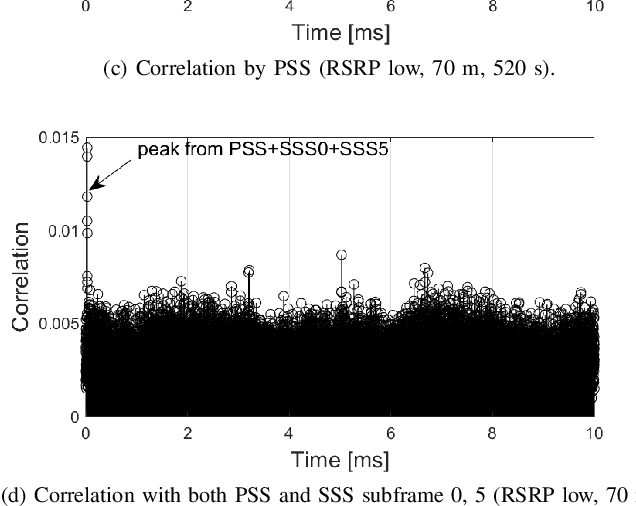
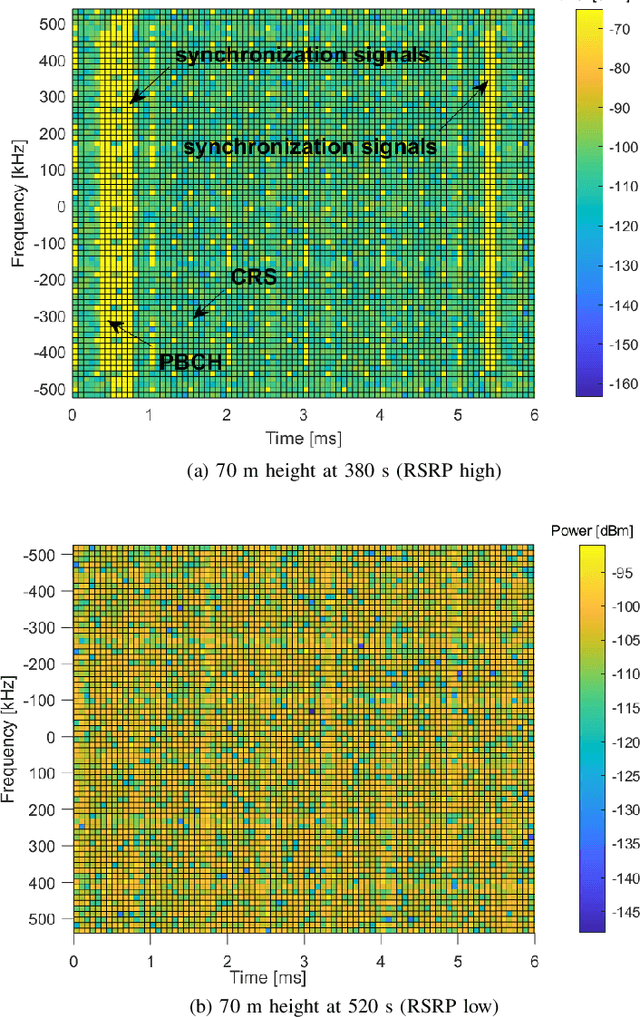
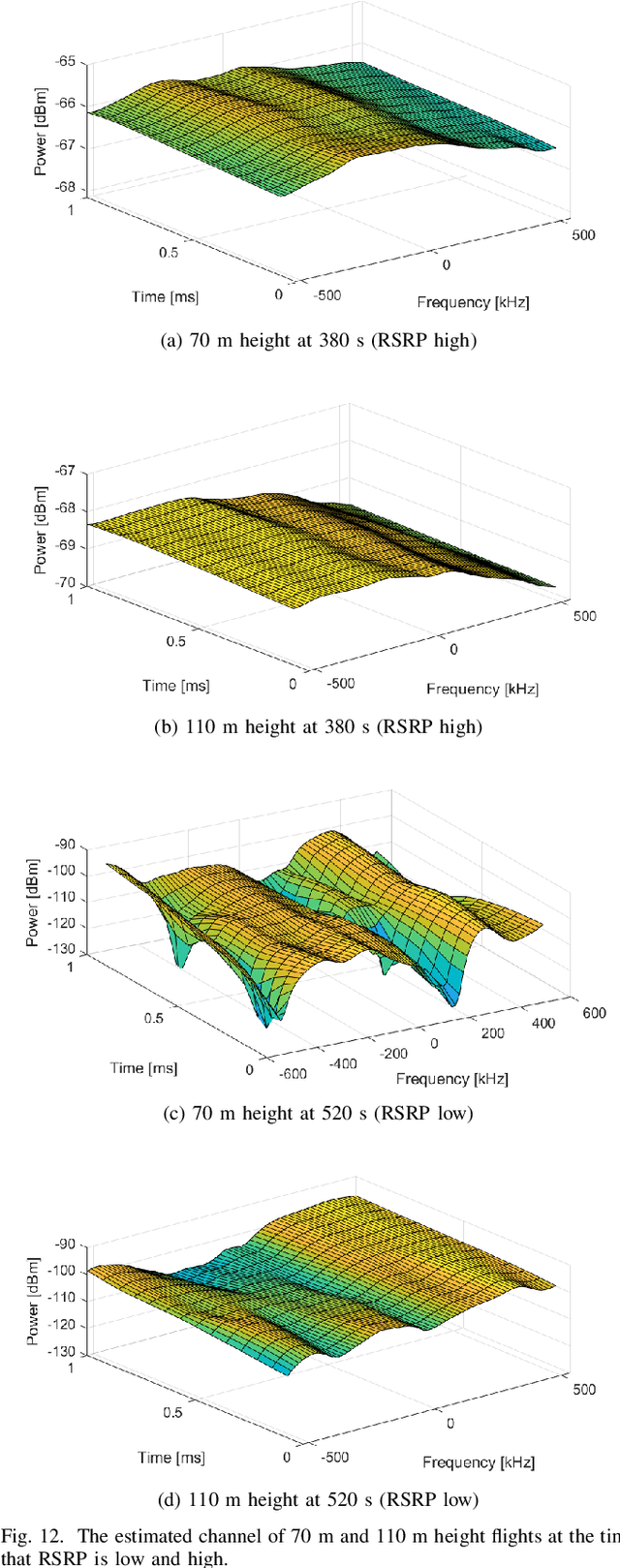
Abstract:Radio dynamic zones (RDZs) are areas or volumes with automatic spectrum management mechanisms that control electromagnetic energy entering, escaping, or occupying the zone. In order to have real-time volumetric spectrum awareness in an RDZ, it is critical to understand the propagation characteristics throughout that RDZ, such as time, frequency, and spatial correlation for various communications scenarios and configurations. This requires wireless measurement campaigns that can be carried out flexibly and are repeatable for different experiment configurations, parameters, and transmitter/receiver locations. Such measurements should also provide raw data from which various key parameters of interest (KPIs) can be conveniently extracted for further analysis. In this paper, we propose AERIQ: a software-defined radio (SDR) based I/Q measurement and analysis framework that is flexible, repeatable, and provides raw I/Q samples for post-processing the data to extract various KPIs. Using SDRs, we collect I/Q data with unmanned aerial vehicles (UAVs) flying at various different altitudes in an RDZ-like outdoor environment, from a 4G LTE eNB that we configure to operate at 3.51 GHz. Using the raw I/Q samples, and using Matlab's LTE Toolbox, we provide a step-by-step description for the following post-processing stages of an aerial receiver: frequency offset estimation/correction, synchronization, cell search, channel estimation, and reference signal received power (RSRP). We provide various representative results for each step, such as RSRP measurements and corresponding analytical approximation at different UAV altitudes, and coherence bandwidth of the channel at different UAV altitudes and link distances. The collected raw data as well as the software developed for obtaining and post-processing such data are provided publicly for potential use by other researchers.
Out-of-Zone Signal Leakage Sensing in Radio Dynamic Zones
Nov 18, 2021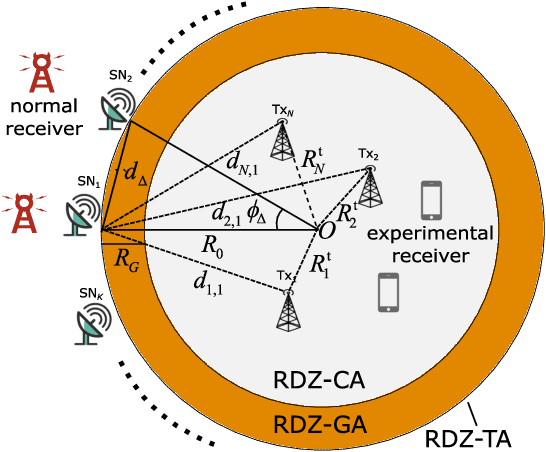

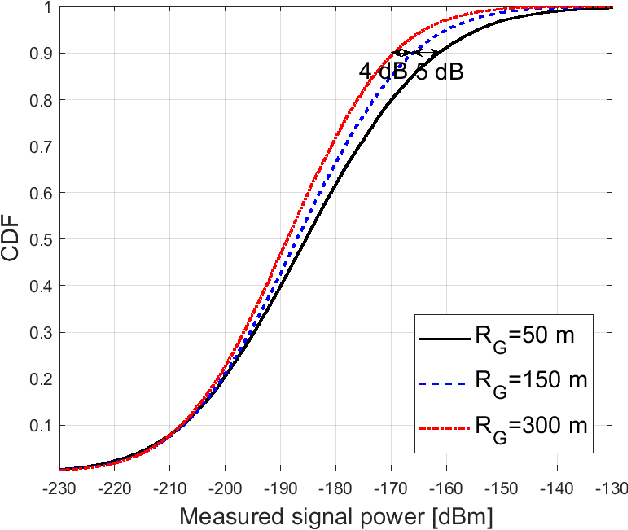
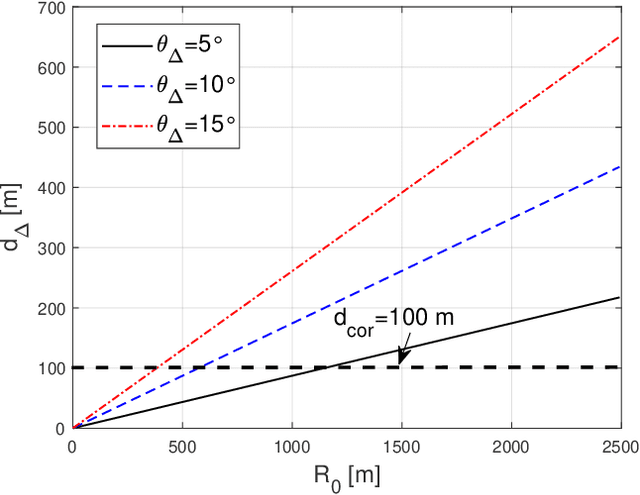
Abstract:Radio dynamic zones (RDZs) are geographically bounded areas where novel advanced wireless technologies can be developed, tested, and improved, without the concern of interfering to other incumbent radio technologies nearby the RDZ. In order to operate an RDZ, use of a real-time spectrum monitoring system carries critical importance. Such a monitoring system should detect out-of-zone (OoZ) signal leakage outside of the RDZ, and if the interference to nearby receivers is intolerable, the monitoring system should be capable of mitigating such interference. This can e.g. be achieved by stopping operations inside the RDZ or switching to other bands for RDZ operation. In this paper, we introduce a spectrum monitoring concept for OoZ signal leakage detection at RDZs, where sensor nodes (SNs) are installed at the boundary of an RDZ and monitor the power leakage from multiple transmitters within the RDZ. We propose a prediction algorithm that estimates the received interference at OoZ geographical locations outside of the RDZ, using the measurements obtained at sparsely located SNs at the RDZ boundary. Using computer simulations, we evaluate the performance of the proposed algorithm and study its sensitivity to SN deployment density.
Base Station Antenna Uptilt Optimization for Cellular-Connected Drone Corridors
Jul 02, 2021



Abstract:The concept of drone corridors is recently getting more attention to enable connected, safe, and secure flight zones in the national airspace. To support beyond visual line of sight (BVLOS) operations of aerial vehicles in a drone corridor, cellular base stations (BSs) serve as a convenient infrastructure, since such BSs are widely deployed to provide seamless wireless coverage. However, antennas in the existing cellular networks are down-tilted to optimally serve their ground users, which results in coverage holes if they are also used to serve drones. In this letter, we consider the use of additional uptilted antennas at cellular BSs and optimize the uptilt angle to minimize outage probability for a given drone corridor. Our numerical results show how the beamwidth and the maximum drone corridor height affect the optimal value of the antenna uptilt angle.
Precoder Design for Physical-Layer Security and Authentication in Massive MIMO UAV Communications
Jul 02, 2021



Abstract:Supporting reliable and seamless wireless connectivity for unmanned aerial vehicles (UAVs) has recently become a critical requirement to enable various different use cases of UAVs. Due to their widespread deployment footprint, cellular networks can support beyond visual line of sight (BVLOS) communications for UAVs. In this paper, we consider cellular connected UAVs (C-UAVs) that are served by massive multiple-input-multiple-output (MIMO) links to extend coverage range, while also improving physical layer security and authentication. We consider Rician channel and propose a novel linear precoder design for transmitting data and artificial noise (AN). We derive the closed-form expression of the ergodic secrecy rate of C-UAVs for both conventional and proposed precoder designs. In addition, we obtain the optimal power splitting factor that divides the power between data and AN by asymptotic analysis. Then, we apply the proposed precoder design in the fingerprint embedding authentication framework, where the goal is to minimize the probability of detection of the authentication tag at an eavesdropper. In simulation results, we show the superiority of the proposed precoder in both secrecy rate and the authentication probability considering moderate and large number of antenna massive MIMO scenarios.
Coverage Analysis of Cellular-Connected UAV Communications with 3GPP Antenna and Channel Models
May 28, 2021


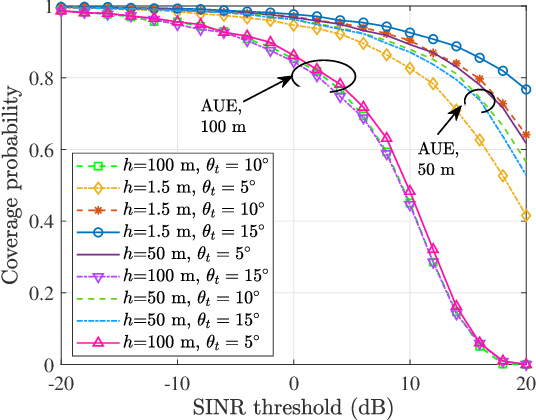
Abstract:For reliable and efficient communications of aerial platforms, such as unmanned aerial vehicles (UAVs), the cellular network is envisioned to provide connectivity for the aerial and ground user equipment (GUE) simultaneously, which brings challenges to the existing pattern of the base station (BS) tailored for ground-level services. Thus, we focus on the coverage probability analysis to investigate the coexistence of aerial and terrestrial users, by employing realistic antenna and channel models reported in the 3rd Generation Partnership Project (3GPP). The homogeneous Poisson point process (PPP) is used to describe the BS distribution, and the BS antenna is adjustable in the down-tilted angle and the number of the antenna array. Meantime, omnidirectional antennas are used for cellular users. We first derive the approximation of coverage probability and then conduct numerous simulations to evaluate the impacts of antenna numbers, down-tilted angles, carrier frequencies, and user heights. One of the essential findings indicates that the coverage probabilities of high-altitude users become less sensitive to the down-tilted angle. Moreover, we found that the aerial user equipment (AUE) in a certain range of heights can achieve the same or better coverage probability than that of GUE, which provides an insight into the effective deployment of cellular-connected aerial communications.
 Add to Chrome
Add to Chrome Add to Firefox
Add to Firefox Add to Edge
Add to Edge